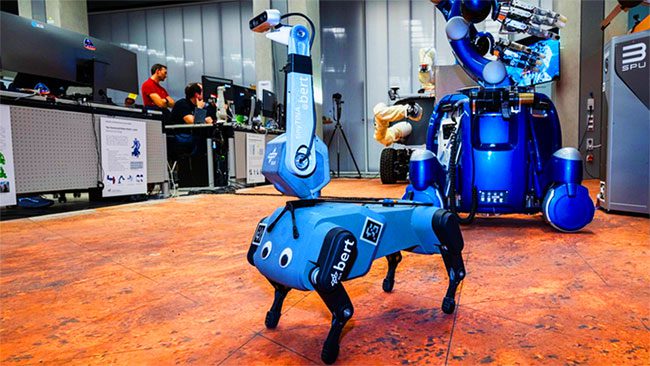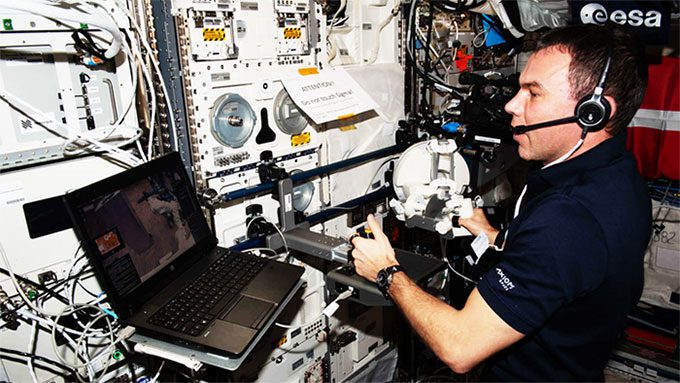Astronaut Marcus Wandt has successfully completed a series of experiments for the Surface Avatar project, including controlling Bert, a four-legged dog-like robot.
The Surface Avatar Project was launched in 2020 and is managed by the German Aerospace Center in collaboration with the European Space Agency (ESA). The project aims to develop technology that allows astronauts to control multiple robots independently and simultaneously, with high precision, or to operate them autonomously or semi-autonomously in space environments. The hope is that when humanity once again explores the surface of the Moon and begins to venture to Mars, these robotic systems will be employed to assist in those explorations.

Dog-like robot Bert receiving control assistance from an astronaut in space. (Photo: ESA/Andreas Mogensen/X).
Recently, an astronaut aboard the International Space Station (ISS) of the European Space Agency (ESA), Marcus Wandt successfully controlled Bert, a four-legged dog-like robot, from space for the first time. Marcus Wandt conducted this experiment to assess how time delay affects robot control during space missions.
During the experiment, Wandt was situated in the Columbus module of the ISS, controlling robot Bert located in the Mars Laboratory at the German Aerospace Center facility in Oberpfaffenhofen. A series of tests demonstrated that Wandt managed three different robots, starting with robot Bert.
After taking control of Bert for a time, Wandt allowed the robot to autonomously explore a simulated environment while he simultaneously controlled another humanoid service robot on wheels named Rollin Justin from the German Aerospace Center, and the Interact Rover from the European Space Agency.

Astronaut Marcus Wandt successfully testing control of Bert, a four-legged dog-like robot. (Photo: ESA/Andreas Mogensen/X).
The multi-robot experiment lasted two and a half hours and was completed successfully. The project manager from the German Aerospace Center stated: “Having robot Bert operate on legs, instead of wheels, could enable the device to climb hills or crawl into caves on Mars, or other worlds in space more easily.”
Another official from the German Aerospace Center noted that until now, only wheeled robots have been remotely controlled by astronauts from space. However, Bert has mastered various types of movement and, thanks to its flexible leg mobility, it can even navigate rugged terrains, including caves.
- Why did NASA take 3 months just to open two locks on a container holding rock samples collected from 6.2 billion kilometers away?
- James Webb Telescope captures stunning images of 19 spiral galaxies
- A type of meat highly regarded for its health benefits for both men and women, should be used during the Tet holiday to nourish the body


















































